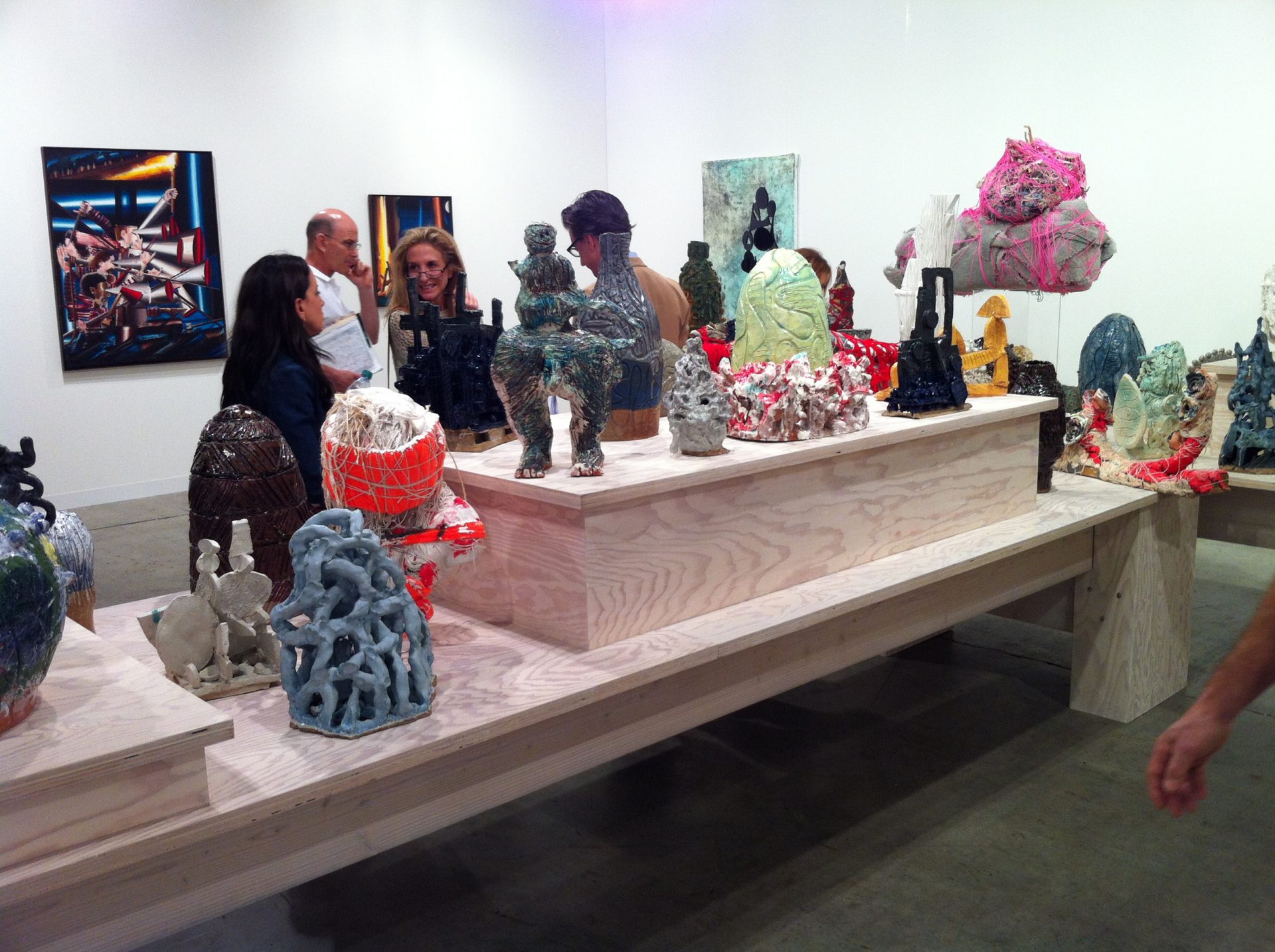BY Dinizulu Gene Tinnie
By now, many of us have received the word that one of our greatest artists, Elizabeth Catlett, died this past Monday, April 2, in her sleep. She was a globally recognized genius in both sculpture (in various materials) and printmaking. She was a true icon and a source inspiration to many of us, especially other artists.
Although much is made about her feminist consciousness and how so much of her work has been motivated by her need to make as statement on behalf of women, which is accurate, she was not limited in her thinking. One of her masterpieces is the life-size bronze statue of Louis Armstrong in Jackson Square, New Orleans. (Sad to say, the piece has been vandalized — someone found a way to steal the mouthpiece of the trumpet which Armstrong is holding, and it is strange to note that there is no acknowledgment of who the artist is — nothing with her name anywhere on or around the sculpture.)
This link is to an Obituary article, among several sources available on line: http://www.bostonglobe.com/metro/obituaries/2012/04/04/elizabeth-catlett-sculptor-captured-black-experience/mqNPE8ODG5mvBY5uGWSW7L/story.html.
Miami was once graced by her presence, when the [old] Main Library hosted an exhibition of her prints (enhanced by large photos of her at work on some of her sculptures) for Black History Month in the early 1980s. During that visit, she visited and spoke to students at Historically Black Florida Memorial College (now University). In that presentation, she posed a very interesting question, which she answered herself, as no one in the audience knew: Why is it that Black music has flourished and become such a powerful presence in our popular culture, while the same did not have for visual art, which was just as strong a presence in traditional African societies?
The answer was slavery: During that perverted time, which occupied most of American history, art was a casualty, because slave owners claimed ownership of everything the enslaved person had, including labor, knowledge, skills, and time, which is life itself. As she explained, it was possible for enslaved laborers to work and produce music at the same time, so music flourished, grew, and evolved. The only way to produce art was to take time away from other work, which was not allowed. In this way, artistic creativity was discouraged and even forbidden, but not killed, with the consequences we live with today.
That historical insight revealed much about Elizabeth Catlett and how she made it her business to be socially conscious, as well as excellent in her art making, just as traditional African artists would have had to have been.
May she rest in peace. Although she has made the physical transition to a new life in another place, she is still very much alive and present among us, through the many people whom she deeply inspired.
Dinizulu Gene Tinnie is a visual artist and educator living and working in Miami, Florida
